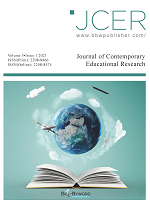From Three-Dimension to Two-Dimension: The Formation of Henri Matisse’s Painting Style
Abstract
Through his life as a pupil in his early years and the transformation into a Fauve (wild beast), Henri Matisse learnt that he must forgo the traditional techniques of the masters and understand art in his own way. He first replaced the color scheme in his paintings with purer colors and clearer outlines of color ranges; in his later life, he devoted himself to two-dimensional coloring and finally to two-dimensional paper cut-outs. Therewith, a unique style brought forth by Henri Matisse took shape, ushering the diversification of the drawing medium. Since then, paintings are no more confined to rigid classicism, which only explores the relationship between colors in sketch-based three-dimensional spaces, but a reflection of the painters’ scrutiny of the nature of painting.
References
Flam DJ, 2004, Matisse on Art [Ouyang Y, Trans.], Shandong Pictorial Publishing House, Shandong, (Original work published 1978).
Matisse H, 2013, The Art Collection of Henri Matisse [Wang P, Xia P, Trans.], Gold Wall Press, Beijing.
Kandinsky W, 2003, Concerning the Spiritual in Art [Li ZW, W DH, Trans.], China Remin University Press, Beijing (Original work published 1912).
Janson HW, 2013, Janson’s History of Art (Translation Group on Art History), Beijing World Publishing Corporation, Beijing, (Original work published 1962).

